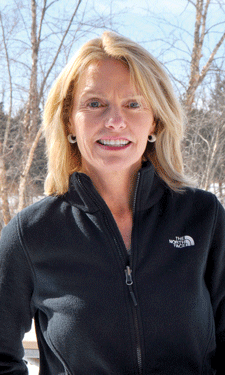 I recently had the opportunity to spend time with two park and recreation departments in Texas. My visits with San Antonio and Austin were interesting and revitalizing, but they also led me to a few realizations about how successful park systems that think innovatively are able to connect to their constituents. Although their programs were very different, they shared a philosophy that I believe is most essential to their success. They are proactive — meeting their customer, their community member, their resident where they are in terms of location, skill and interest. Waiting for someone to walk into their center or park just isn’t an option.
I recently had the opportunity to spend time with two park and recreation departments in Texas. My visits with San Antonio and Austin were interesting and revitalizing, but they also led me to a few realizations about how successful park systems that think innovatively are able to connect to their constituents. Although their programs were very different, they shared a philosophy that I believe is most essential to their success. They are proactive — meeting their customer, their community member, their resident where they are in terms of location, skill and interest. Waiting for someone to walk into their center or park just isn’t an option.
In Austin, I visited the Camacho Activity Center of the Austin Department of Parks and Recreation, a community recreation center with a unique focus on high adventure programming. Their program is very much about connecting kids to nature and the outdoors, and in recent years they have developed a model that essentially takes the park experience to the community. Center staff conduct kayaking, climbing, mountain biking, photography and nature-based programming, and takes it around to the city’s 20 other community centers, sharing their expertise and innovative programming that the other centers don’t provide. Every kid gets a nature experience no matter where they live.
Ryan Eaker, center director, said they depend largely on highly qualified part-time staff, which works great for their programming, but it leads to high turnover because the staff is so highly sought after. Search “Camacho Activity Center” on YouTube and watch “We Are Not Your Normal Rec Center.” This just may be the “new” normal for both staff and visitors.
In San Antonio, I learned about their Fit Pass 2.0 program, a program that takes a community-wide approach to health. The slogan of this passport program is, “Live Healthier. Stay Fit. Get to Know Your City.” Residents are encouraged to collect points by visiting a variety of parks and participating in recreational and fitness activities offered by their department or their partners. Top scorers receive prizes based on the number of activities they participated in. Riding a bike to a drive-in movie or taking a fitness class offers different point values. Even walking a shelter dog earns points!
Michael Baldwin, the San Antonio park department’s special project manager, worked with the city’s former mayor and current Secretary for Health and Human Housing (HUD) Julian Castro to launch this program to combat obesity. Families, individuals and age-related groups such as seniors can all participate, and the program builds a constituency for their parks and facilities by encouraging the public to visit a variety of parks and participate in activities that they might not have ever tried before.
These were two clearly different approaches to engaging the public, but each worked beautifully. Park and recreation agencies are the ultimate winners when they adopt a proactive approach as these two agencies have because as the number of park users expands, so, too, does their park fan base. And, as we all know, funding increases proportionally with the number of park advocates.
Parks can and should make a difference in people’s lives. It is up to each of us to learn the needs of our communities and provide creative, innovative programs that improve the health of citizens, enable everyone to enjoy park and recreation programs, and utilize the natural features in parks to connect kids to nature and the outdoors. San Antonio’s and Austin’s park and recreation departments are clearly showing that there are a number of innovative ways to accomplish this.
Barbara Tulipane, CAE, is NRPA's President and CEO.

